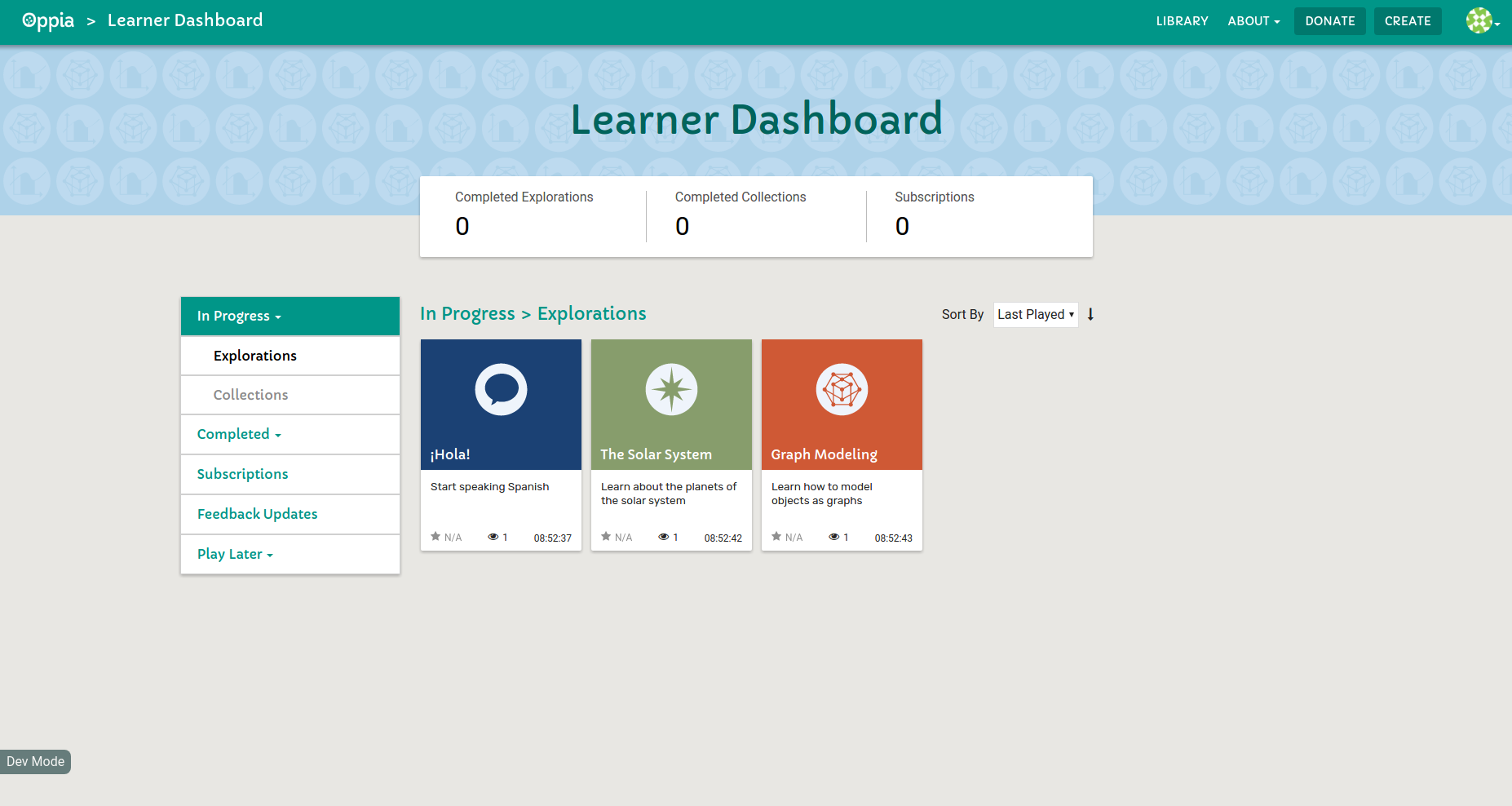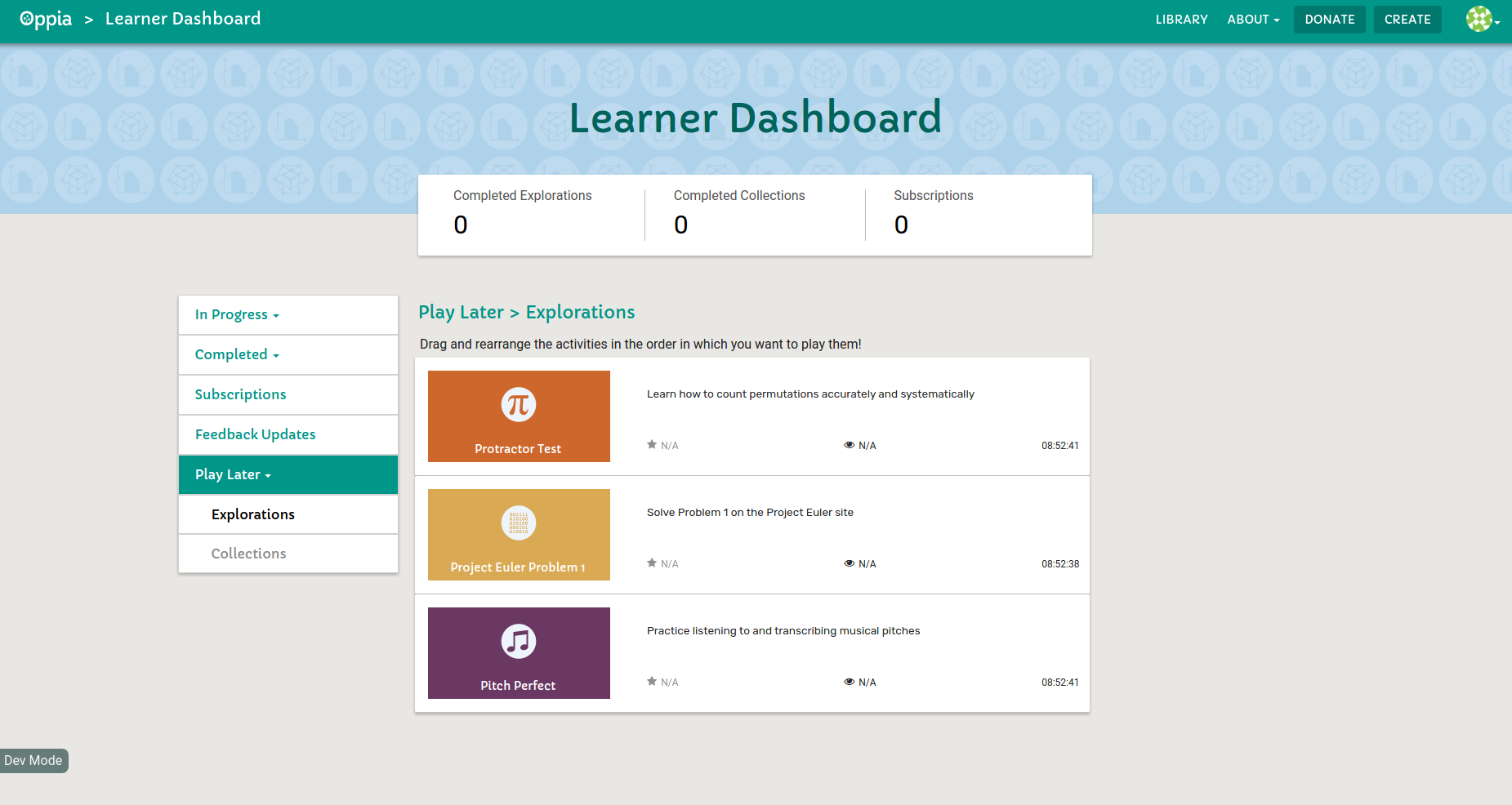Building the Oppia Learner Dashboard
The Problem: A Disjointed Learning Experience
Online learning platforms often excel at delivering content but struggle with a more subtle challenge: long-term user engagement. Before 2017, the Oppia Foundation faced a similar issue. While learners could consume individual lessons (“explorations”), there was no central, personalized space for them to manage their journey.
This created a disjointed experience. Progress was difficult to track, valuable feedback from creators was easily lost, and there was no simple way to bookmark interesting lessons for later. Without a personal “home base,” learners were less likely to build a lasting relationship with the platform, hindering Oppia’s mission to make learning effective and enjoyable.
Our Solution: A Centralized Learner Dashboard
As part of Google Summer of Code 2017 (selected with a 7% acceptance rate), I designed and built the Learner Dashboard from the ground up. This project introduced a personal space that consolidated all learning activities into one intuitive interface, built around four core features:
1. Unified Progress Tracking
We implemented a robust backend system to automatically track every learner’s progress. The dashboard visualizes completed and in-progress explorations, allowing users to seamlessly resume exactly where they left off.
 The dashboard displays learners’ ongoing and completed explorations in an organized list
The dashboard displays learners’ ongoing and completed explorations in an organized list
2. Creator Subscription & Updates
To foster a community, we built a subscription system. Learners can follow their favorite content creators and receive notifications directly on their dashboard when new explorations are published, bridging the gap between creators and their audience.
3. Integrated Feedback Management
Previously, feedback threads were scattered across the platform. We centralized them in the dashboard with:
- Clear visual indicators for unread messages
- Direct response capabilities from the dashboard
- Thread organization by exploration
This ensures learners never miss valuable advice and can “close the loop” on their questions efficiently.
4. “Play Later” Bookmarking
To help learners plan their educational journey, we added a “Play Later” feature with:
- One-click bookmarking of explorations and collections
- Personal learning queue management
- Drag-and-drop reordering functionality
 Learners can bookmark explorations to create a personalized learning queue
Learners can bookmark explorations to create a personalized learning queue
Key Innovation
The dashboard’s architecture combined several technical innovations:
- Scalable Backend Design: Built with Python and Google App Engine, utilizing Map-Reduce for parallel processing to support millions of learners
- Real-time Synchronization: Using AngularJS for dynamic updates without page refreshes
- Modular Component System: Reusable components that could be extended for future features
- User-Centered Design Process: Extensive user interviews and iterative design refinements
Impact & Results
The Learner Dashboard delivered both immediate and long-term benefits:
Enhanced User Experience: By centralizing all activities, the dashboard dramatically reduced friction and made managing one’s learning journey effortless.
Improved Learner Retention: Providing a personalized and persistent space significantly boosted learner motivation and retention through features like progress tracking and contextual prompts.
Foundation for Future Innovation: The scalable infrastructure established robust patterns for:
- Personalized recommendation systems
- Advanced learning analytics
- Adaptive educational experiences
- Community features and social learning
Project Details
- Program: Google Summer of Code 2017
- Organization: Oppia Foundation
- Project Title: Learner Dashboard
- Mentors: Sean Lip, Jared Silver, Rachel Chen
- Status: Successfully completed and passed all evaluations
- Official Link: GSoC Project Page
- Repository: Oppia GitHub
This project remains one of my most impactful open-source contributions, directly improving the learning experience for thousands of students worldwide while establishing critical infrastructure for the platform’s continued growth.